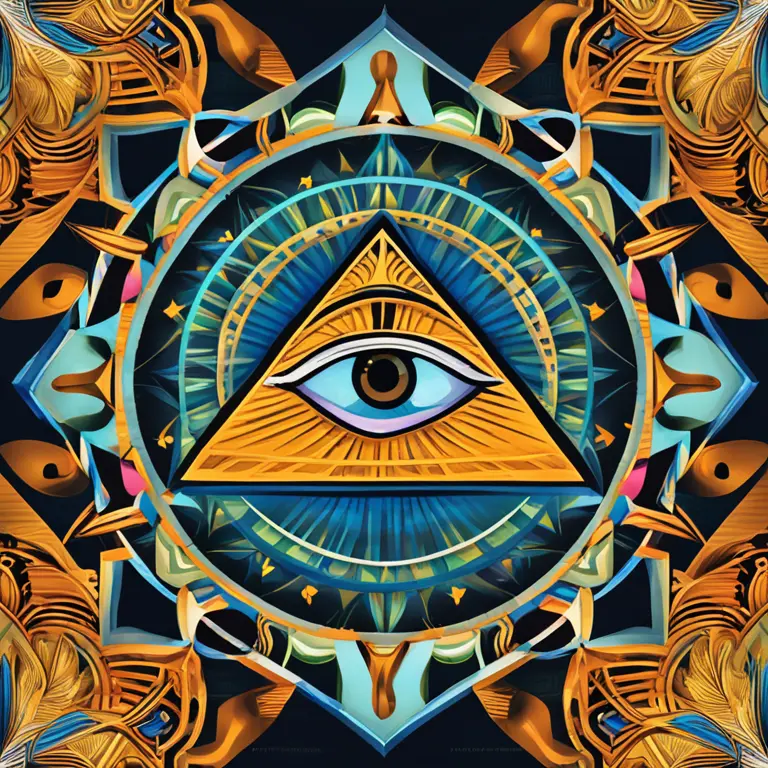
Awakening Your Third Eye Through Meditation
Explore effective meditation practices tailored to enhance your third eye's intuition and perception abilities.
article by Hina Kurosawa
Introduction to the Third Eye
The concept of the third eye is a spiritual representation of insight and clairvoyance. It is often associated with the pineal gland, located between the two hemispheres of the brain, and is considered a gateway to higher consciousness. In many spiritual traditions, the third eye is seen as a symbol of enlightenment and inner knowledge. Awakening the third eye is believed to open up pathways to intuition, enhanced perception, and deepened understanding of the self and the universe.

Setting the Foundation
Before delving into the specific techniques to stimulate the third eye, it's important to establish a strong foundation in your overall meditation practice. Begin with a comfortable seated position, allowing your spine to maintain its natural curvature. Focus on your breath, consciously slowing it down to create a state of calm and receptivity. Regular meditation not only sets the stage for third eye awakening but also cultivates a space of balance and peace in your day-to-day life.

Focused Visualization Technique
One effective method to awaken the third eye is focused visualization. Close your eyes and visualize an indigo lotus or eye at the center of your forehead. As you breathe deeply, imagine the eye opening slowly, with each petal of the lotus unfurling. This process helps to concentrate your awareness on the third eye center, inviting it to become more active and receptive to subtle energies.

Chanting Mantras for Activation
Chanting is another powerful tool in awakening the third eye. The mantra "Om" or "AUM" is traditionally associated with the third eye chakra, which is linked to intuition and perception. Chanting this mantra in a steady, rhythmic pattern can help synchronize your energy and create vibrations that stimulate the area. Be mindful of the sensations that arise, as these can be signs of your third eye expanding.

Third Eye Breathing Exercises
Breathing exercises are also valuable for unlocking the potential of the third eye. A technique known as "Bhramari Pranayama," or the bee breath, involves making a humming sound during exhalation. This resonates with the pineal gland and can assist in its activation. Another technique, "Nadi Shodhana," or alternate nostril breathing, can balance the left and right brain hemispheres, creating the optimal environment for third eye awakening.
Incorporating Crystals and Essential Oils
Crystals such as amethyst, purple fluorite, and labradorite are believed to resonate with the frequency of the third eye. Holding or placing these crystals on your forehead during meditation can amplify your focus. Similarly, essential oils like frankincense, sandalwood, and clary sage can be used to anoint the third eye area, further assisting in meditation and the awakening process.
Patience and Consistency
It's important to approach third eye meditation with patience and consistency. Awakening this center is a gradual process that requires regular practice and dedication. By integrating these techniques into your daily routine, you can encourage the development of intuition and perception associated with the third eye; but remember, the journey is as significant as the destination. Embrace each step with mindfulness and allow your experiences to unfold naturally.
Published: 2/12/2024
Modified: 2/12/2024
More predictions
Come back here soon to learn more about yourself and your future


The Harmonic Resonance of Meditation Music
Delve into the serene world of meditation music and discover how it amplifies your spiritual and astrological practices, guiding you toward inner peace and cosmic synchronicity.


The Heart of Meditation: A Journey Inward
Discover the heart of meditation, its benefits, and how to integrate this ancient practice into modern life for peace and self-discovery.


The Impact of Meditation
Delve into the heart of meditation and its profound impact on mind, body, and spirit in our fast-paced world.